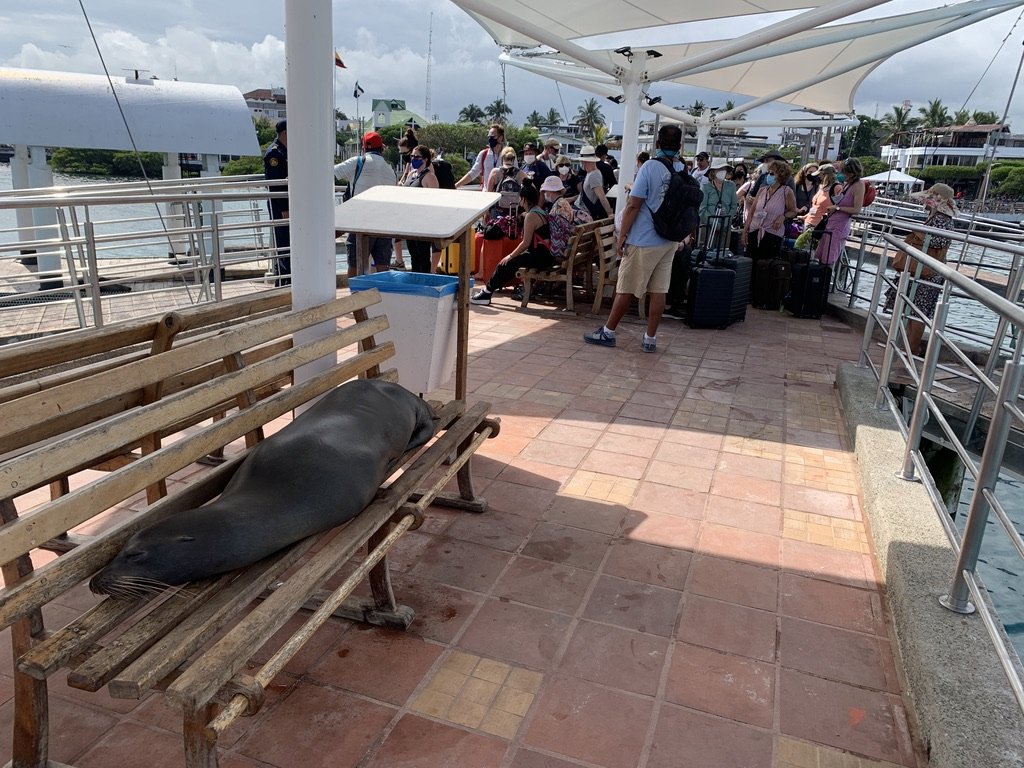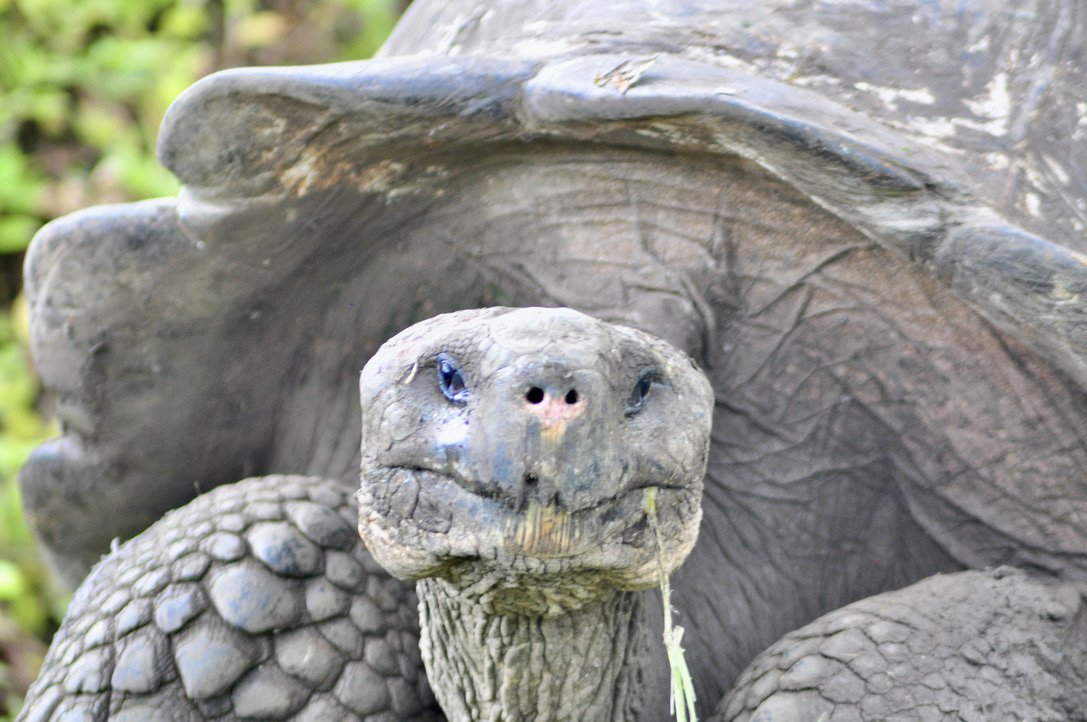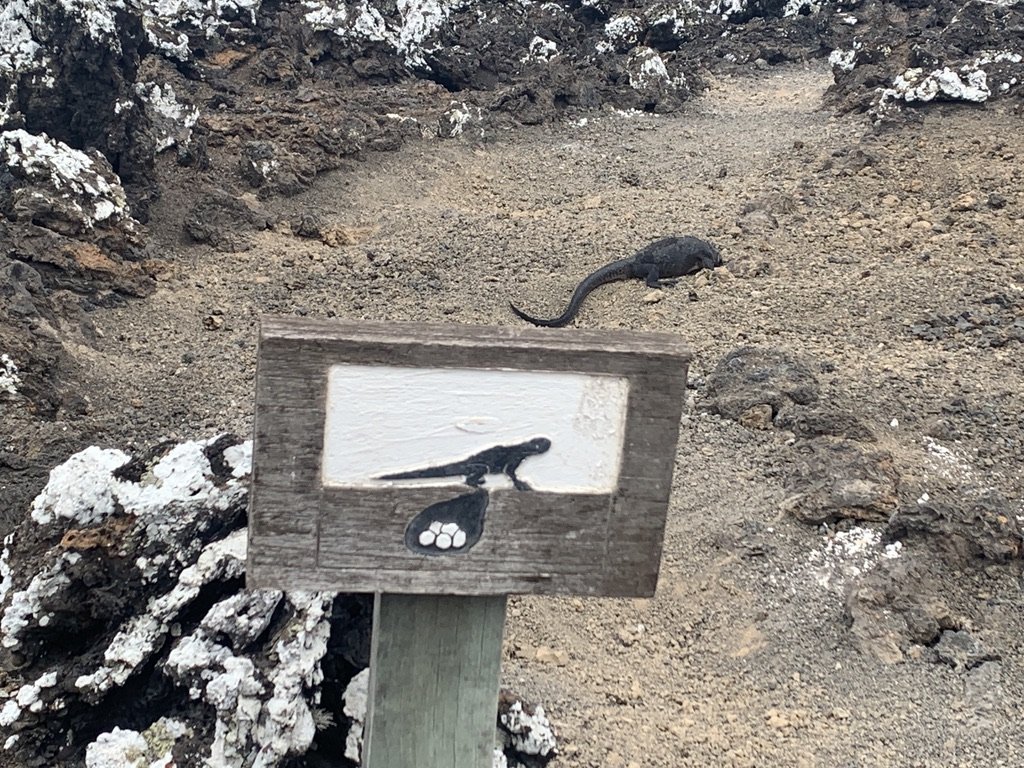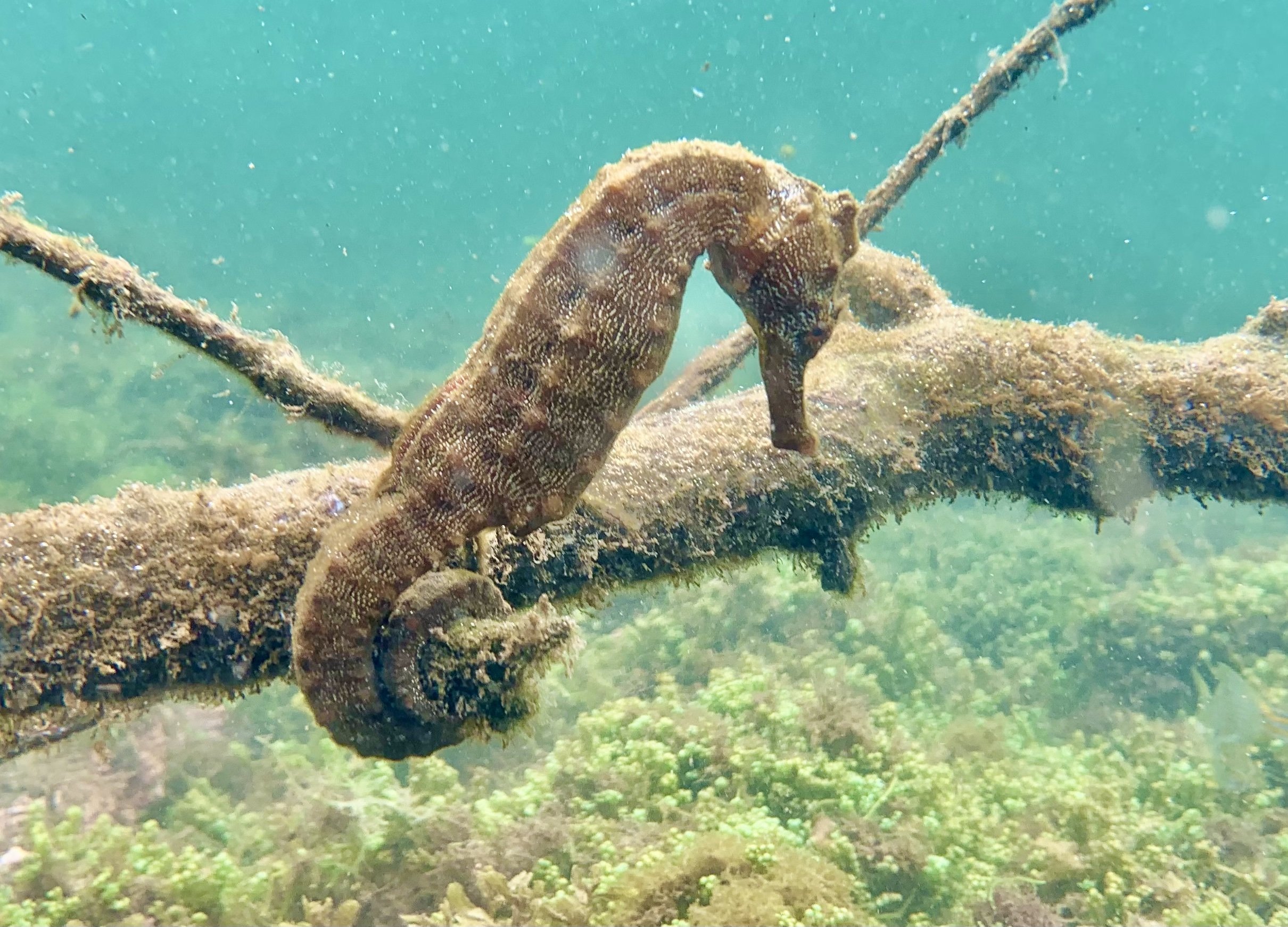The first thing you notice about going to the famed Galapagos Islands, before you even arrive, is how complicated it is to get there, especially during a pandemic. Flying there from Guayaquil is more like an international flight than domestic, from the multiple checks you get, additional paperwork, and even a quick fumigation on the plane before you disembark. This is all for a reason of course, a really good one: the Galapagos are a unique ecosystem and that requires visitors to be especially careful about what is brought in (and taken out). These islands are host to many invasive species that impact local wildlife, so steps are taken to make sure new ones are not brought with every new visitor.
The second thing you notice about the islands is how seamlessly wildlife is incorporated into daily life. From the sea lions occupying every bench within sight of the water, to the giant tortoises loitering along the road, to the ever-present iguanas wandering around. I’ve traveled around Central & South America, Mexico, and the Caribbean but I’ve never seen anything quite like this. To miss the wild animals here could only be done by walking around blindfolded.
After our arrival to the Baltra airport and transfer to our hotel in Puerto Ayora, our first stop was the Darwin Research Center, located on the edge of the island’s largest town. To explore the Galapagos National Park, you must hire a local guide to protect both the traveler and the animals, so we met our guide and did a walking tour through the campus. Darwin’s finches flitted about the ground, giant cacti grew in the desert scrubland, and various displays on the history of human and wild inhabitants on the islands, including the famous biologist himself. The tour ends with a visit to the breeding center of the famous giant tortoises, getting to see each part of the life cycle from hatchlings to retired breeding adults, and a visit to the final resting place of the famous Lonesome George.
The third thing you notice about the Galapagos is how varied the topography is and how quickly it changes with even slight difference in elevation. Our second day started with ride up to the Santa Cruz highlands to visit the Gemelos, huge twin sinkholes that offer a glimpse of the geologic history of the islands. Then we paid a visit to the El Chato Ranch to see where the giant tortoises migrate after nesting to mate and feed. Our visit wrapped up with a walk through a lava tunnel and a visit to the gift shop where you can pose inside a tortoise shell (though not the kind of shell we focus on with our Too Rare To Wear program!)
That afternoon we boarded a ferry to Isabela Island, the largest of the archipelago, about a two hour ride away. We arrived and transferred to our hotel which looks over a wetland with resident flamingos and other birds. That night, we had a surprise over dinner; two of our clients got engaged (a first for our trips)! The restaurant set up a special performance of a singer and a silk dancer, making the evening special.
Our first exploration of Isabella was a visit to a tortoise breeding center run by Galapagos National Park. Next we took a bike ride around Humedales, a wetland site that is home to many iguanas, tortoises, birds like blue footed boobies, and other animals. After lunch, some of the group walked to another wetland estuary, Concha de Toro, where we snorkeled around with sea lions, rays, and turtles. That evening, our group started its participation in our local partner Intercultural Outreach Initiative’s sea turtle research program. The beach along Puerto Villamil is home to a small population of nesting green sea turtles. Our group participated in beach walks each evening and morning though we were not lucky enough to see a sea turtle nest or hatch while we were there.
On day five, we headed up into the Isabela highlands, visiting a sustainable farm called Bellavista that IOI is supporting with its sustainable agriculture program. Our group toured the farm, soaked in the great views of the island, and each took a turn helping to milk a cow and learn how the family makes cheese and yogurt. This was followed by a wonderful lunch with the best pumpkin soup I’ve ever had, all prepared locally by the family. Upland farms like Bellavista were key to feeding the island’s residents during the pandemic as food became scarce when the island was cut off for long periods from the mainland.
The next day, we took a short boat ride to Tintoreras, a volcanic island that is home to penguins, iguanas, sea lions, and much more. We took a short walk through the lava rock, taking precautions to avoid nesting iguanas. We saw a black tip reef shark prowling the shallow water and observed three penguins hanging out on the lava rock, as well as blue footed boobies and other birds. That was followed by a snorkel where we spotted a sea turtle, rays, and many species of fish. Later that afternoon, a group of us took out tandem kayaks to explore the area more, getting our first opportunity to see sea turtles feeding on the algae growing on the shallow ocean floor.
Our final full day on Isabela was everyone’s favorite. We hopped on a boat to head to an area called Tuneles, a fascinating land and coastal waterscape of lava rock interspersed with both mangrove trees and cacti. We wound through the rock formations spotting sea turtle heads popping out of the water. Taking a short walk around the area, we watched from above as green turtles with fascinating orange spots wound their way through the tunnels. After that, we stopped at an area inside the tunnels to snorkel, seeing large schools of fish. The highlight though was a different spot we visited, a feeding area where we saw at least twelve green turtles. For me, this was an especially fun experience as it was my first time witnessing a cleaning station, with wrasses darting around a turtle’s mouth cleaning it of parasites. We also got to see a surprisingly large seahorse, its tail wrapped around a submerged tree branch.
Photo: Peter Tejada Flor
The visions of wild animals in every direction will stay with my long after this visit. Everybody should experience this extraordinary mixture of life at least once in their lives.











